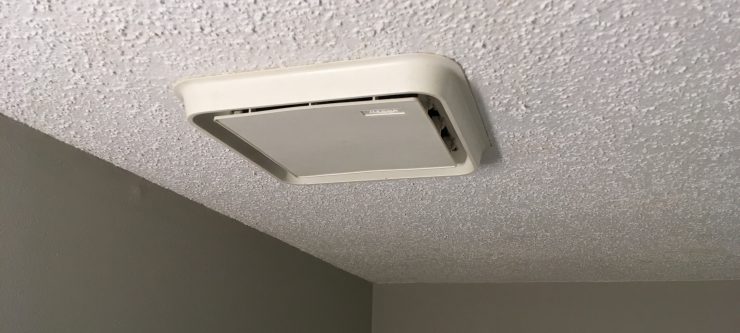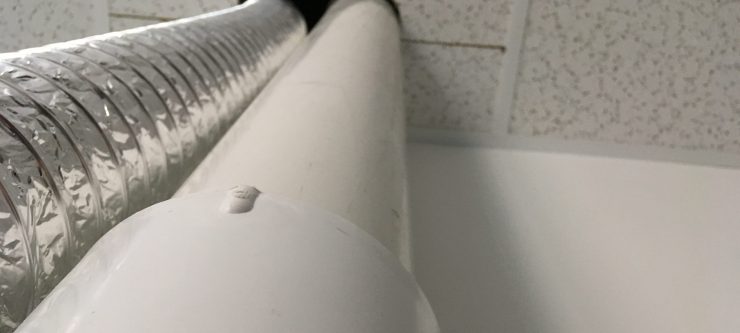Your bathroom exhaust fan removes excess moisture (from hot showers), chemical fumes and bathroom odors and expels them outside. The entire system runs from the ceiling in your bathroom, through your attic and to the outside your home.
When you buy a home, your home inspector will check the entire system to make sure it’s installed and functioning properly. But if you’d like to check the bathroom exhaust system while you’re still living in your home to make sure everything is working properly, follow these steps.
In The Bathroom
The ceiling vent and fan in the bathroom should be tight (not loose), clean from dust and should have a smooth, unobstructed sound while running.
- Using the wall switch, turn the bathroom fan on and off. Listen for any irregular sounds. A crooked fan can scrape against other parts of the exhaust system. Your bathroom fan should have a smooth hum.
- Visually look for a buildup of dust on the vent covering. Dust can impede airflow and cause moisture and odors to stay in your bathroom. Clean if necessary.
- With the fan turned off, remove the vent covering and check the fan for dust buildup. Clean if necessary.
Attic Components
If you’re able, find the adjacent ductwork of the exhaust fan in your attic above your bathroom. The ductwork should be straight for 3 feet from the base of the fan and vent (curved duct causes air to flow back down into the fan). Any bends in the duct after that should be as gradual as possible.
- Check the fan housing for moisture or indications of past dampness (stained drywall, mold, etc.). Moisture issues may mean that your air is venting into the wrong place or your fan base isn’t sealed properly.
- Look for light from the bathroom coming through the sides of the exhaust base. The base shouldn’t have any excess space and should ideally have a lining of caulk or foam sealant between its edges and the ceiling.
- Make sure the duct is sealed to the fan housing.
Outside of the Home
The exhaust duct in the attic should lead all the way to an exterior wall or roof. Bathroom exhaust venting in the attic or ceiling can cause moisture problems like mold and rotting wood.
Once the duct reaches your home’s exterior, the end should have a vented wall cap. These wall caps have flaps that open while the exhaust is running and close while not. The wall cap should also have a screen to keep animals and insects out.
The exhaust shouldn’t be vented near a walkway or outdoor living area and should be 10 feet away from any air intake, like a fresh air intake duct.
- Make sure the exhaust leads outside and not into the attic.
- Make sure the wall cap vent flaps are able to open freely.
- See if the wall cap is sealed against the house with caulking or insulation.
- Check the area. See if the exhaust is vented into a space that you or your guests may be in.

